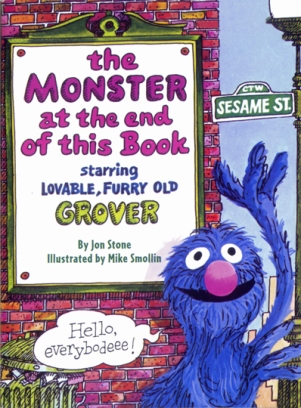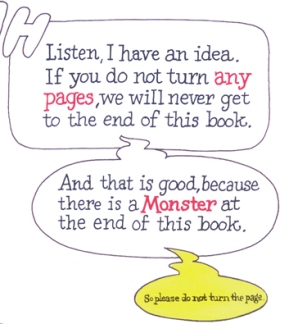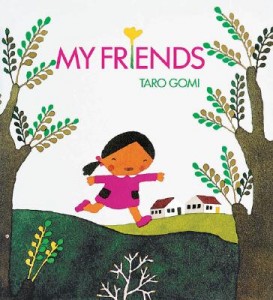I’ve mentioned several times (probably too many times) on this blog that the very first book I bought for my daughter was The Phantom Tollbooth. But, dear readers, do you know what the SECOND book I ever bought for her was? It was The Monster at the End of This Book by Jon Stone and Mike Smollin.
So, with the entirety of children’s literature in front of me, why did I choose to purchase a Sesame Street book, a book based on a TV show, as the second foundational text of my unborn daughter’s home library?
It’s a simple answer – The Monster at the End of This Book is an AMAZING book. It’s a groundbreaking book. In my humble opinion, it is one of THE greatest read-aloud books ever written, it is one of the best “books about books” in the history of literature, and, personally, I have a hard time of thinking of more than a few other titles that do such an effective job of showing kids how breathtakingly FUN reading a book can actually be. And, yes, it’s a book about Grover, a small blue puppet from TV. It’s freakin’ great.
The Monster at the End of This Book was the first “meta” book I ever remember encountering as a child. I know hipsters throw around the word “meta” almost as frequently as they line up for overpriced brunches, but, for the rest of you, a good working definition of “meta” is: “a term, especially in art, used to characterize something that is characteristically self-referential.” In other words, The Monster at the End of This Book is a book that is wonderfully aware that it is, in fact, a book. And that’s a really, really fun and potentially mind-blowing concept to introduce to a young reader.
The lead character, Grover – lovable, furry old Grover – is one of Sesame Street‘s friendly monsters and, as the star of this “meta” picture book, he can talk to the readers, he knows that we’ll be turning pages… unlike most characters in children’s literature, he is fully aware that he is a character in a book and he understands the mechanics of reading books. He knows that, in the act of reading a book, we as readers turn pages until we get to the end of the book. And that’s a problem for Grover because, in his post-modern “meta” world, he was able to read the title of his own book and he now knows that “there’s a monster at the end of this book.” And poor old Grover is afraid of that monster and, to prevent us from ever encountering the rumored beast, he wants us to stop reading RIGHT NOW.
That sounds like such a simple idea, but it’s as complexly absurd as anything Lewis Carroll ever proposed in any of his Alice books. Who ever heard of a character asking you to stop reading their book? And he’s not just asking you – he’s BEGGING you. Grover realizes that, every time you finish reading a page and turn to the next one, you are bringing him that much closer to this so-called monster. So there is this tangible countdown, this almost inherent drama at the core of The Monster at the End of This Book, in which, more than in reading almost any other kids’ book, you are in-your-face AWARE that you’re moving towards SOMETHING. And, by asking us to stop reading, Grover has ensured that any curious kid worth their salt absolutely MUST reach the end of this book. [read the rest of the post…]
{ 11 comments }



